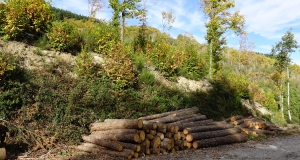According to the “Our Common Future” Report (also known as the Brundtland Report), which was published by the World Commission on Environment and Development (WCED) of the United Nations in 1987, sustainable development is defined as: "development that meets the needs of the present without compromising the ability of future generations to meet their own needs."
In this definition, the concept of sustainability refers to three "pillars" that make the development of economic activities and the protection of the environment compatible:
- environmental sustainability - ensures the availability and quality of natural resources
- social sustainability - ensures quality of life, safety and services for citizens
- economic sustainability - ensures economic efficiency and income for businesses
The definition of sustainable forest management (SFM) adopted by the Ministerial Conference on the Protection of Forests in Europe (MCPFE) in 1993 is directly linked to these pillars: “Sustainable Forest Management is the stewardship and use of forests and forest lands in a way, and at a rate, that maintains their biodiversity, productivity, regeneration capacity, vitality and their potential to fulfil, now and in the future, relevant ecological, economic and social functions, at local, national, and global levels, and that does not cause damage to other ecosystems.”












